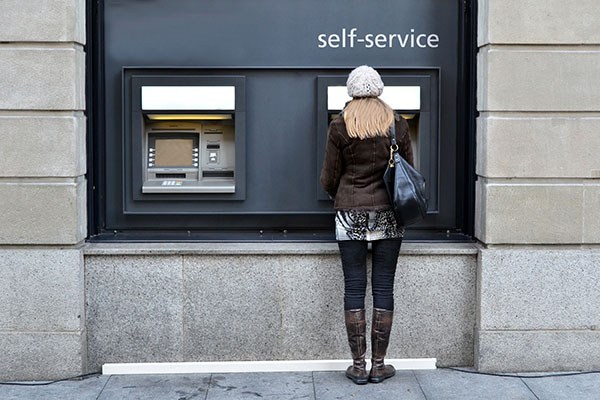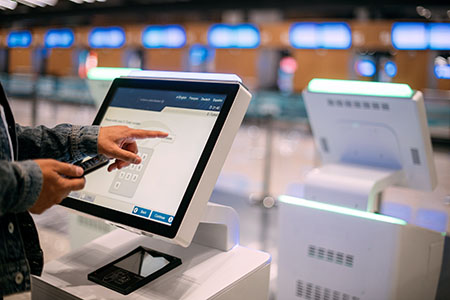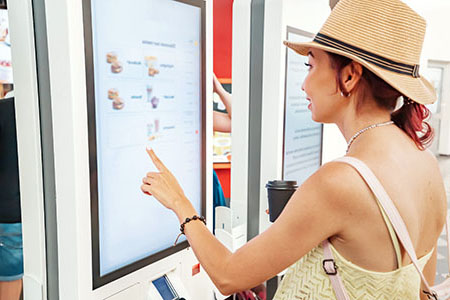Thursday, February 27, 2025
Tuesday, February 25, 2025
NEW INC. MAGAZINE COLUMN FROM HOWARD TULLMAN
By trying to please
everyone—including freeloaders—the coffee company ultimately began alienating
the paying customers.
EXPERT OPINION BY HOWARD TULLMAN, GENERAL MANAGING PARTNER, G2T3V
AND CHICAGO HIGH TECH INVESTORS @HOWARDTULLMAN1
FEB 25, 2025
Trying to please everyone, or be all
things to all people, has never been a successful strategy for business, or for
just about anyone other than certain politicians who are adept at smoothly
lying to whichever segment of voters they happen to be addressing, and
promising them precisely what they want to hear. Millions of them would rather
remain deluded than learn the often-harsh truth and be forced to face the
painful realities of their lives and their future prospects.
Trump has not only made lying into an
art form, but he’s also gotten away with virtually everything. Crime evidently
pays when the frauds and thefts are grand enough. And the grifting and graft is
regularly celebrated and excused by millions of MAGAts, sycophants, enablers,
and venal politicians looking out for their own hides.
Every day we’re also seeing the living
embodiment of the “don’t ask for permission, ask for forgiveness” doctrine from
a shameless scoundrel. And here again, MAGAts and right-wing media applaud his
willfulness and reckless disregard for the law—at least until they slowly
realize that their own oxen are being gored, their businesses are imperiled,
and their own parents and kids are being screwed.
Setting the Wrong Example00:0001:42
In all of this chaos and lawlessness,
there couldn’t be a worse set of messages for our upcoming entrepreneurs, who
are young, naive, and painfully short of memory. The days of the Theranos prosecution and the foolishness and
dangers of the “fake it until you make it” attitude are long gone
and largely forgotten. So, the temptation to say anything, eagerly overpromise,
run blindly full speed ahead, and pray for the best is quite seductive
regardless of the size of your business or the years that you’ve been at it.
A current case in point is Starbucks,
which is in the midst of its third or fourth massive turnaround — including a
layoff of 1,100 corporate employees — and can’t seem to make up its mind about
what it really wants to be. As a result, the company is spread a mile wide and
an inch deep across 40,000 locations and providing little or no coherent
guidance, direction, or vision to stores, licensees, or customers. Nor has this
flawed wayfinding been helped by having four CEOs since the pandemic, in
addition to periodic visits from Howard Schutz, Starbucks’s creator, visionary,
and former CEO/chairman, who lingered too long.
His masterstroke of woke foolishness —
in 2018, after an embarrassing and racially charged scene in a Philadelphia
store went viral — was to remark that he didn’t want nonpaying customers who
were being turned away from using the stores’ bathrooms to “feel less than,” or
presumably to have their feelings hurt. Attempting to put that confusing and
inconsistent sentiment into a policy or procedural manual to make everyone
happy was a fool’s errand.
After years of inviting the world into
its shops and truly turning many locations into pre-pandemic offices, the
company motto could just as well have been, “Stay for the day without having to
pay.” The growing problem was that underlying this welcoming approach was also
a policy that asked nonpaying customers, after some modest amount of time, to
leave. In addition, it became increasingly clear that the volume and behavior
of the freeloaders was discouraging paying customers. The fantasy of openness
was a nice sentiment, but the facts on the ground were becoming harder and
harder to manage.
Why Starbucks Is Making a Belated
Backtrack
Starbucks has now officially reversed
its open-door policy and will focus, appropriately, on paying customers, which
makes a ton of business sense. An extensive new code of conduct has been
published that warns that violators will be asked to leave and that the cops
may be called if necessary. The goal is to make expected behaviors clear for
all and to thereby create a better environment for everyone.
But as you might imagine, because the
company is still a (struggling) business and not a public service, Starbucks’s
new CEO is trying to have his cake and coffee, too. The result is more
corporate doublespeak, which is unlikely to do anything beyond compounding the
confusion and dumping the onus of interpretation, and enforcement, on the
baristas. The new CEO, Brian Niccol, recently told investors that he wants to
make the stores “feel like welcoming coffeehouses” and “community centers”
without mentioning that everyone entering would be expected to buy a cup of joe
or a latté. If this strikes you as a pot full of the same old and tired
porridge, you wouldn’t be far off.
At some point, Starbucks needs to
admit that the company seeks a certain kind of customer and a certain level of
spend that simply cannot include all comers. You can’t please everyone, you
can’t serve everyone, and you can’t fool anyone with a story that makes no
sense. The unfortunate thing is that senior management has pushed the problem
downstream to the frontline troops who are the least prepared and able to
police the properties while at the same time trying to serve the paying
customers. Things are bad enough that they are constantly navigating the
minefield between in-store buyers and mobile
customers—all of whom feel at one time or another like second-class
citizens.
There’s clearly no good or simple
solution, although removing the bulk of the seating at many stores and
converting them into basically drive-up and pick-up shops seems to be working.
How? By better setting and managing the customers’ expectations. But the
best and most realistic answer is to bite the bullet and tell the truth: You
can’t be all things to all people.
Monday, November 06, 2023
LOOP NORTH NEWS


By Howard Tullman
6-Nov-23 – I guess there was a time not too terribly long ago when we actually preferred doing business with people rather than machines. When we believed that the human interaction somehow added value to the transaction and could, if necessary, address questions and issues that might arise. This was based in no small part on our prior impressions and experiences in terms of the individuals we were likely to encounter on these occasions. They might even recognize us; we trusted them, they trusted us. We thought of them as our neighbors and part of the community, and we believed that they were generally interested in being of service to us.
Those times are long gone. These days you can walk into a branch bank and the humans sitting behind desks in cubicles are happy to tell you that they can’t even cash a check for you. You’ve got to wonder why they even bother to come to work?
Too many businesses today are replacing people with technology without understanding that the increasingly few customer-facing employees they still employ are their “front door” and most likely their prime point of customer contact.
 | As a result, these firms which are willing to insert just about anyone who can breathe into those sensitive positions are really selling themselves short and cruising for a bruising. |
Especially post-pandemic, your front-line troops are the ones who are best suited to welcome back, reassure, and re-connect directly with your customers. If your entire consumer service experience is automated and abstract, you can bet that Amazon will be handling your customers’ banking and other needs in no time at all. And if these folks have no real training, no authority, and not even cash on hand, they might just as well be ATMs.
Today, for a variety of economic and social reasons, all bets are off in terms of what passes for an acceptable workforce as well as appropriate dress and behaviors. The net effect is that we’re all, more or less, passively migrating or being actively pushed toward impersonal tech solutions – whether they work well or not – partly because the alternatives are so unfriendly, unappealing, or unappetizing.
And, believe me, it’s not just the banks that are a problem. Grocery stores, restaurants, bars, and bodegas all have similar issues. They may have massive and meaningless video displays and all kinds of Muzak, or a million different bottles of beer, but the overall retail experience just keeps getting worse and worse.
Maybe it’s post-pandemic PTSD or longing for times long past, or the fact that it’s flu season, but between the autumn’s abundant allergies, winter’s sniffles, and resurgent COVID issues, everyone seems to be walking around stressed and a little more sensitive to their surroundings than they might have in the past. Observant consumers are increasingly noticing the cutbacks and cost-saving efforts.
Too many businesses today are replacing people with technology without understanding that the increasingly few customer-facing employees they still employ are their ‘front door’ and most likely their prime point of customer contact. |
But the biggest and most obvious changes are in the attitudes, abilities, and anger of the people staffing the stores. I get that there’re a lot of folks unhappy with their work situations, but honestly, I don’t think it’s my fault, or that they should take it out on me.
A simple example. We’re entering the runny nose season and I’d like to suggest that Whole Foods and the other food purveyors and restaurateurs which have staff handling my food suggest to their esteemed team members that it’s a good time to keep the studs and other jewelry hanging out of their noses away from my meals. It gives me the creeps even apart from any contagions.
This stupid idea of letting their food handlers bring their whole selves to work needs to be cleaned up so they don’t bring COVID, colds, and other germs to work with them. If you think I’m the only one disgusted by the drips, feel free to ask anyone standing in line or seated at a table and subjected to this snotty spectacle. Self-service checkout machines still basically suck, but they’re looking better all the time compared with the bozos behind the registers and the brutal baggers.
Or how about the new restaurant kiosks where you’re supposed to order your food as you enter and then wait for someone behind the counter to bring it to you? We’re seeing more and more variations of this theme even in traditional restaurants – not just fast-food joints – as a way to cut back on wait staff.
Needless to say, these displays have all the flexibility and warmth of an ice cube, and you end up feeling just like another cog in the system. |  |
They make you long for the crabby old servers who at least knew what you wanted and seemed slightly interested as well. It’s hard to escape the subtle message of “eat and get out” that so many of these places give off. Not exactly comfort food. But don’t forget to leave a generous tip as the display officiously reminds you.
Now’s the time that smart business builders and owners need to take a step or two back and decide what business they’re in and how they want that business to operate. Frankly, I think most of them – if they could mystery shop their own places – would be shocked and disappointed at how unpleasant the whole process has become.
Every business is the same in at least one way – whatever you’re selling, it’s your people who deliver the goods. Starbucks takes a lot of crap for a variety of reasons, but one thing that Howard Schultz said at the outset of the business was the truest observation ever. He said “we’re not in the coffee business, serving people. We’re in the people business, serving coffee.”
Saving on staff, cutting back on training, trying to do things cheaply that you shouldn’t do at all – all send the same message to your customers. And not a happy one. Technology is a tool, not a savior in these situations. Care for your customers first and then worry about the costs.
 | Howard Tullman is General Managing Partner for G2T3V, LLC – Investors in Disruptive Innovators, and for Chicago High Tech Investors, LLC. He is also the author of Words of Wisdom: A 60-year compilation. |
Tuesday, October 24, 2023
NEW INC. MAGAZINE COLUMN FROM HOWARD TULLMAN
Terrible Tech and Untrained Staff: For Customers, Is This
the Worst of Both Worlds?
Too many companies are
trying to automate customer service with technology that doesn't work; then
they compound the problem with customer-facing workers who can't help the
customer.
BY HOWARD TULLMAN, GENERAL MANAGING PARTNER, G2T3V AND CHICAGO HIGH TECH INVESTORS@HOWARDTULLMAN1
I guess there was a time
not too terribly long ago when we actually preferred doing business with people
rather than machines. When we believed that the human interaction somehow
added value to the transaction and could, if necessary, address questions and
issues that might arise. This was based in no small part on our prior
impressions and experiences in terms of the individuals we were likely to
encounter on these occasions. They might even recognize us; we trusted them,
they trusted us. We thought of them as our neighbors and part of the community,
and we believed that they were generally interested in being of service to us.
Those times are long
gone. These days you can walk into a branch bank and the humans sitting behind
desks in cubicles are happy to tell you that they can't even cash a check for
you. You've got to wonder why they even bother to come to work?
Too many businesses
today are replacing people with technology without understanding that the
increasingly few customer-facing employees they still employ are their
"front door" and most likely their prime point of customer contact.
As a result, these firms, who are willing to insert just about anyone who can
breathe into those sensitive positions, are really selling themselves short and
cruising for a bruising. Especially post-pandemic, your front-line troops are the ones who are best suited
to welcome back, reassure, and re-connect directly with your customers.
If your entire consumer service experience is automated and abstract, you can
bet that Amazon will be handling your customers' banking and other needs in no
time at all. And if these folks have no real training, no authority, and not
even cash on hand, they might just as well be replaced by ATMs.
Today, for a variety of
economic and social reasons, all bets are off in terms of what passes for an
acceptable workforce as well as appropriate dress and behaviors. The net effect
is that we're all, more or less, passively migrating or being actively pushed
toward impersonal tech solutions (whether they work well or not) partly because
the alternatives are so unfriendly, unappealing, or unappetizing. And, believe
me, it's not just the banks that are a problem. Grocery stores, restaurants, bars,
and bodegas all have similar issues. They may have massive and meaningless
video displays and all kinds of Muzak, or a million different bottles of beer,
but the overall retail experience just keeps getting worse and worse.
Maybe it's post-pandemic
PTSD or longing for times long past, or the fact that it's flu season, but
between the autumn's abundant allergies, winter's sniffles, and resurgent Covid
issues, everyone seems to be walking around stressed and a little more
sensitive to their surroundings than they might have in the past. Observant
consumers are increasingly noticing the cutbacks and cost-saving efforts. But
the biggest and most obvious changes are in the attitudes, abilities, and anger
of the people staffing the stores. I get that there're a lot of folks unhappy
with their work situations, but honestly, I don't think it's my fault, or that
they should take it out on me.
A simple example. We're
entering the runny nose season and I'd like to suggest that Whole Foods and the
other food purveyors and restauranteurs that have staff handling my food to
suggest to their esteemed team members that it's a good time to keep the studs
and other jewelry hanging out of their noses away from my meals. It gives me
the creeps even apart from any contagions. This stupid idea of letting their
food handlers bring their whole selves to work needs to be cleaned up so they
don't bring COVID, colds, and other germs to work with them. If you think I'm
the only one disgusted by the drips, feel free to ask anyone standing in line
or seated at a table and subjected to this snotty spectacle. Self-service
checkout machines still basically suck, but they're looking better all the time
compared with the bozos behind the registers and the brutal baggers.
Or how about the new
restaurant kiosks where you're supposed to order your food as you enter and
then wait for someone behind the counter to bring it to you? We're seeing more
and more variations of this theme even in traditional restaurants (not just
fast-food joints) as a way to cut back on wait staff. Needless to say, these
displays have all the flexibility and warmth of an ice cube, and you end up
feeling just like another cog in the system. They make you long for the crabby old servers who at least knew what you wanted and
seemed slightly interested as well. It's hard to escape the subtle message of
"eat and get out" that so many of these places give off. Not exactly
comfort food. But don't forget to leave a generous tip as the display
officiously reminds you.
Now's the time that
smart business builders and owners need to take a step or two back and decide
what business they're in and how they want that business to operate. Frankly, I
think most of them-- if they could mystery shop their own places -- would be
shocked and disappointed at how unpleasant the whole process has become. Every
business is the same in at least one way-- whatever you're selling, it's your
people who deliver the goods. Starbucks takes a lot of crap for a variety of
reasons, but one thing that Howard Schultz said at the outset of the business
was the truest observation ever. He said "we're not in the coffee
business, serving people. We're in the people business, serving
coffee."
Saving on staff, cutting
back on training, trying to do things cheaply that you shouldn't do at all --
all send the same message to your customers. And not a happy one. Technology is
a tool, not a savior in these situations. Care for your customers first and
then worry about the costs.
LINKS TO RELATED SITES
- My Personal Website
- HAT Speaker Website
- My INC. Blog Posts
- My THREADS profile
- My Wikipedia Page
- My LinkedIn Page
- My Facebook Page
- My X/Twitter Page
- My Instagram Page
- My ABOUT.ME page
- G2T3V, LLC Site
- G2T3V page on LinkedIn
- G2T3V, LLC Facebook Page
- My Channel on YOUTUBE
- My Videos on VIMEO
- My Boards on Pinterest
- My Site on Mastodon
- My Site on Substack
- My Site on Post
LINKS TO RELATED BUSINESSES
- 1871 - Where Digital Startups Get Their Start
- AskWhai
- Baloonr
- BCV Social
- ConceptDrop (Now Nexus AI)
- Cubii
- Dumbstruck
- Gather Voices
- Genivity
- Georama (now QualSights)
- GetSet
- HighTower Advisors
- Holberg Financial
- Indiegogo
- Keeeb
- Kitchfix
- KnowledgeHound
- Landscape Hub
- Lisa App
- Magic Cube
- MagicTags/THYNG
- Mile Auto
- Packback Books
- Peanut Butter
- Philo Broadcasting
- Popular Pays
- Selfie
- SnapSheet
- SomruS
- SPOTHERO
- SquareOffs
- Tempesta Media
- THYNG
- Tock
- Upshow
- Vehcon
- Xaptum
Total Pageviews
GOOGLE ANALYTICS
Blog Archive
-
▼
2025
(611)
-
▼
September
(31)
- America’s Grievances Against Its “King” on Constit...
- NEIL STEINBERG
- FRANK BRUNI: Even in mourning, Trump drives our co...
- THE FEARMONGER AND FRAUD IN CHIEF
- MAGAts
- Whitewashing Charlie Kirk Promotes Political Violence
- Did Trump Just Declare War on the American Left?
- What Happened Yesterday Was NOT About "Freedom."
- NEVER FORGET - NEVER FORGIVE THE ROTTEN SAUDIS WHO...
- Be careful not to inadvertently help sainthood Cha...
- Opinion Max Boot Russia’s drone incursion in P...
- JoJo on Trump
- New INC. Magazine Column from Howard Tullman
- Johnson is a Lying Pedo
- Frank Bruni
- The (Not-So-)Interim Docket
- EZRA KLEIN - VERY TIMELY AND IMPORTANT
- WHERE IS PEDO DON?
- Edwin Eisendrath Trump's cabinet is filled with t...
- https://www.threads.com/@auroradrone/post/DORhxlPD...
- The One Danger That Should Unite the U.S. and China
- JoJo
- Ty Cobb
- Trump has turned the Oval Office into a Las Vegas ...
- How Many...
- FORRINERS
- HOWARD TULLMAN JOINS LISA DENT ON WGN RADIO TO DIS...
- TULLMAN COLUMN IN LOOP NORTH NEWS
- NEW INC. MAGAZINE COLUMN FROM HOWARD TULLMAN
- Trump Train Runs Amok - Weak Stupid Republicans Si...
- More brain worms on the loose
-
▼
September
(31)


